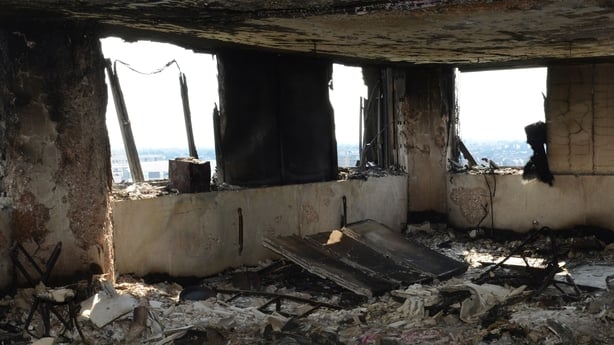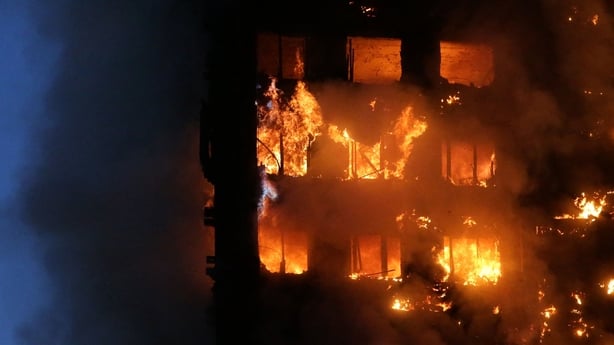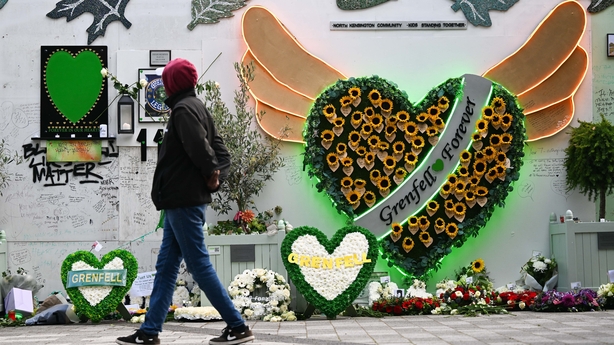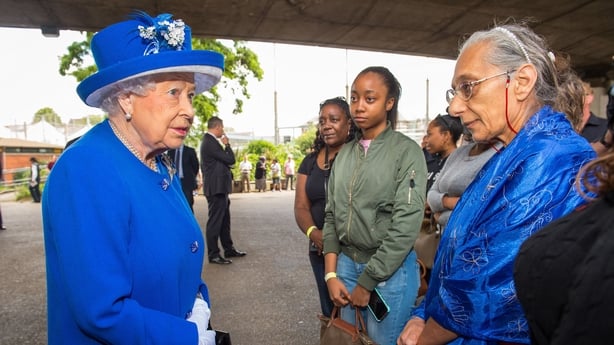It takes a lot to silence London.
It's why the hush on the streets around Grenfell Tower in West London on the morning of 14 June, 2017 was so unusual.
It was also in stark contrast to the frenzy of the previous hours.
Helicopters and sirens had filled the air as the fire took hold around 1am.
Fire engines from across London converged on the streets around the building, firefighters and locals alike aghast at what they saw.
But by daybreak the mood had changed.
As the multi-storey residential building smouldered in the early morning light, the operation turned from rescue to recovery.

The worst fire in British post-war history, it claimed 72 lives.
Hundreds of others were left homeless and deeply traumatised by the events of that night.
That it had happened in the wealthiest borough in one of the wealthiest cities in the world only added to the sense of disbelief.
And its effects were felt far beyond North Kensington.
Thousands of people found themselves immediately questioning the safety of their homes, with the need for replacement cladding on apartment buildings across the UK causing anguish and financial hardship for residents.
The speed with which the fire took hold has been outlined in submissions to the Grenfell Tower Inquiry, whose second and final report will be published on Wednesday.

Starting on the fourth floor just before 1am, the fire had climbed 20 floors to the top of the building in less than 30 minutes, turning a residential building into an inferno.
Initial "stay put" advice to residents was in place for too long, according to London Fire Brigade Commissioner Andy Roe.
Mr Roe, who revoked the advice moments after he reached the scene of the blaze, recently told the BBC that telling residents who called 999 but were not directly affected by fire or smoke to remain in place until emergency services had arrived would have impacted the decisions made by those within Grenfell Tower.
That advice was based on the assumption that a fire would not spread so fast, an erroneous assumption that then took everyone by surprise.
The reasons for that rapid spread of fire, and specifically the cladding in which the building was wrapped, was one of the key focuses of this phase of the Grenfell Inquiry, the report of which will be published five years after the first phase was completed.

Those directly involved in this second phase, known as core participants and including survivors and the bereaved, will be given embargoed access to the report the day before official publication.
The report has been long awaited by the families of those killed and those who escaped the building.
For some it will give a sense of finality to the events of 14 June, 2017 and for others it will mark the start of another phase as they wait to see if criminal charges relating to the fire are forthcoming.
London’s Metropolitan Police and the UK Crown Prosecution Service said earlier this year that no charges relating to the blaze should be expected before 2026, citing the scale and complexity of the investigation as well as the need for the public inquiry to have finished its work.
One of the key reasons behind the establishment of a public inquiry was to make sure that a tragedy like Grenfell could never happen again.

Just days ago, 100 people were evacuated from a fire in a block of flats in Dagenham in East London.
Over 200 firefighters and 45 fire engines were deployed to the blaze in the early hours of 26 August.
With investigations ongoing into what caused the Dagenham fire, the London Fire Brigade has said that the role of cladding on the building will form part of that inquiry.
For countless people across the UK, the Dagenham fire was a salient reminder of the dangers they still face living in high-rise buildings which have yet to be refurbished.
They face significant safety concerns and considerable financial worries amid the cost of refurbishment and the impact on resale values.
But even as the impact of the Grenfell fire reverberates for others across the UK, it is those who lived through the trauma of the fire and the long shadow it has cast who feel its impact most acutely.
This week's report publication will be yet another reminder of a tragedy they live with every day.





